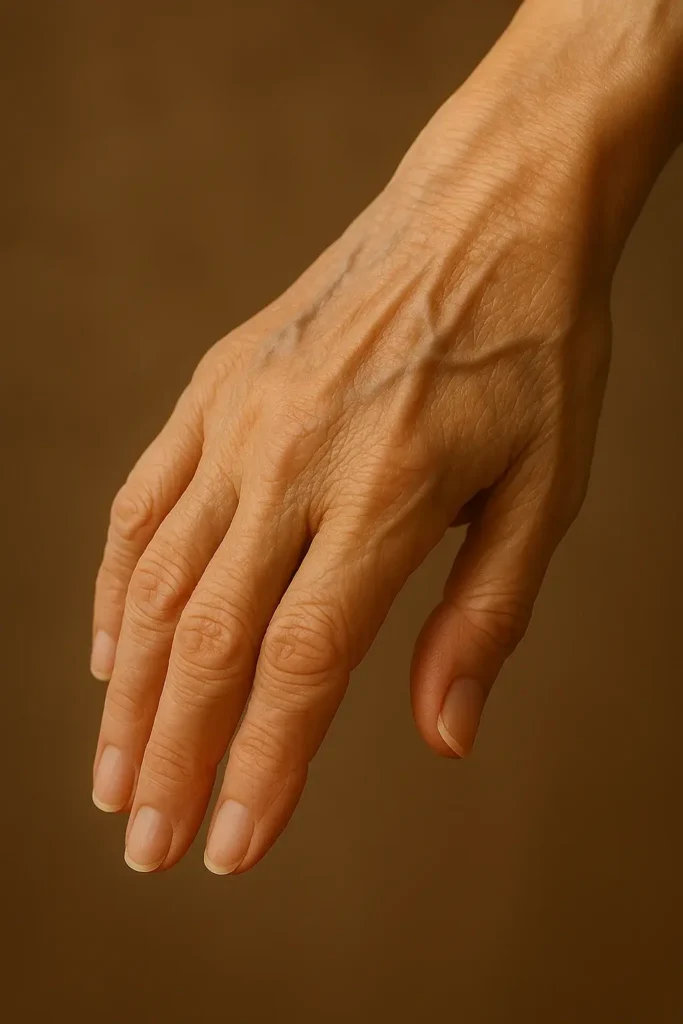The 4 Stages and Progression of Rheumatoid Arthritis: A Complete Guide to Understanding the Journey!
What is Rheumatoid Arthritis (RA)?
Rheumatoid Arthritis (RA) is a chronic autoimmune disease characterized by the immune system attacking joints, leading to inflammation, pain, and progressive damage. Unlike osteoarthritis due to wear and tear, RA’s misdirected immune response primarily targets the joint’s synovial lining. RA can also affect the eyes, lungs, skin, and cardiovascular system. It typically develops between ages 30 and 60 and affects women more frequently than men, although it can occur at any age.

Causes and Risk Factors of RA
While the exact cause of RA remains unknown, researchers believe it results from a combination of genetic and environmental factors. Here are some key contributors:
- Genetics: Certain genes, like HLA-DR4, increase susceptibility.
- Hormones: Estrogen may influence the immune system, partially explaining why women are more often affected.
- Environmental Triggers: Smoking, air pollution, or viral infections can trigger the immune system to misfire.
- Obesity: Excess weight strains joints and may increase inflammation.
Understanding the Immune System’s Role
In RA, the immune system confuses healthy tissue for foreign invaders. It sends white blood cells to attack the synovial membrane — the lining of joints — causing inflammation. Over time, this immune assault breaks down cartilage and bone, leading to deformities and immobility if untreated.
Stage 1: Early Rheumatoid Arthritis
Intervention is most effective in this phase, and proper care can minimize damage.
Symptoms of Stage 1 RA
- Morning stiffness lasting longer than 30 minutes
- Swelling in the fingers and toes
- Mild joint tenderness
- Occasional fatigue
These early signs resemble other conditions, making timely and accurate diagnosis vital.
Diagnosis in the Early Stage
Doctors confirm RA using a combination of physical exams, blood tests (e.g., rheumatoid factor and anti-CCP), and imaging (like X-rays or ultrasounds). Even if joint damage isn’t visible, inflammation markers can raise early flags.
Early Treatment Approaches
Treating RA early with DMARDs (Disease-Modifying Anti-Rheumatic Drugs) like methotrexate can slow or halt disease progression. NSAIDs and corticosteroids help manage symptoms in the short term.
Stage 2: Moderate Progression
When RA progresses beyond the early stage, inflammation begins to cause noticeable damage inside the joints. While some individuals may still manage with lifestyle changes and medications, others begin experiencing more intense symptoms.
Worsening Joint Inflammation
In this stage, the inflammation becomes more consistent and widespread. Symptoms may include:
- Increased joint swelling and warmth
- Pain in wrists, knees, elbows, and ankles
- Reduced joint mobility
- Persistent fatigue
Unlike Stage 1, the discomfort in Stage 2 is less intermittent and begins to interfere with daily activities.

Visible Signs and Imaging Results
Doctors may detect apparent joint damage using X-rays or MRIs. Bone erosions and cartilage thinning might appear. Blood tests will likely show elevated inflammatory markers such as ESR (erythrocyte sedimentation rate) and CRP (C-reactive protein).
Managing Pain and Fatigue
Managing RA in this stage involves a multi-pronged approach:
- Medications: Continued use of DMARDs or the introduction of biologic agents (like adalimumab or etanercept).
- Physical Therapy: Helps maintain flexibility and prevent muscle loss.
- Energy Conservation: Patients are advised to balance activity with rest to reduce fatigue.
Stage 3: Severe RA
Stage 3 marks a critical point where permanent joint damage has occurred. Patients may experience significant limitations in movement and daily functioning.
Bone and Cartilage Damage
By this stage, the ongoing inflammation has eroded both bone and cartilage. The joint space narrows, and deformities may become apparent, especially in the hands and feet.
Signs include:
- Misaligned fingers (ulnar drift)
- Joint nodules (firm lumps under the skin)
- Instability and weakness in affected joints
Physical Limitations
When everyday tasks like opening jars or climbing stairs become complex, assistive devices or home modifications may be needed to maintain independence.
Advanced Medication Strategies
If traditional DMARDs are no longer effective, doctors may switch to:
- Biologics or JAK inhibitors: These newer medications target specific immune pathways to reduce inflammation and slow progression.
- Combination therapy: Medications are combined for synergistic effects.
Treatment aims to preserve joint function and prevent complications.

Stage 4: End-Stage RA
In this final phase, the inflammation may decrease, but the damage is extensive. Joints no longer function properly, and pain may be constant.
Loss of Joint Function
Complete fusion of joints (ankylosis) can occur, and patients may experience:
- Extreme stiffness
- Inability to bend or straighten affected joints
- Disuse muscle atrophy often necessitates mobility aids such as walkers or wheelchairs.
Assistive Devices and Surgical Options
Orthopedic surgery may be considered, including:
- Joint replacement (especially knees or hips)
- Synovectomy (removal of the inflamed joint lining)
- Arthrodesis (joint fusion to improve stability)
Adaptive tools (grabbers, splints, raised toilet seats) help patients perform everyday tasks with less strain.
Palliative Care Considerations
In some cases, pain management and emotional support become priorities. Mental health counseling and support groups can be vital during this stage.
How RA Progression Varies by Individual
No two RA journeys are alike. Factors that influence disease progression include:
- Age at onset
- Genetics and immune system activity
- How early treatment began
- Comorbidities like diabetes or obesity
- Patient adherence to treatment plans
Some individuals may experience flares and remissions for decades, while others may advance quickly to severe stages.
The Role of Rheumatologists
Rheumatologists are specialists in autoimmune and joint diseases. They’re essential to a well-managed RA plan. Their role includes:
- Accurate diagnosis and staging
- Ongoing monitoring of symptoms and medication side effects
- Coordination with physical therapists, orthopedic surgeons, and nutritionists
Regular check-ups help catch new complications early and adjust treatments as needed.
Latest Treatments and Research Advances
Science continues to evolve in the fight against RA. Recent advancements include:
- Targeted synthetic DMARDs like baricitinib
- Biosimilars: Cost-effective alternatives to expensive biologics
- Ongoing trials using stem cell therapy and gut microbiome modulation
For the latest developments, organizations like the Arthritis Foundation offer reliable resources and updates.
Lifestyle Changes to Slow RA Progression
Although there’s no cure for RA, lifestyle choices can significantly improve the quality of life.
Diet and Nutrition
An anti-inflammatory diet is highly recommended:
- Eat more: Omega-3 fatty acids, leafy greens, berries, turmeric, whole grains
- Avoid: Processed foods, sugar, red meat, alcohol
- Maintain a healthy weight to reduce joint stress
Exercise and Joint Care
Low-impact activities like:
- Swimming
- Yoga
- Walking
These help maintain flexibility and improve circulation. Joint protection techniques (like using larger joints for lifting) can also prevent wear.
Stress Management and Mental Health
Chronic pain can lead to anxiety and depression. It’s essential to:
- Practice mindfulness or meditation
- Join RA support groups
- Seek therapy when needed
Mental wellness is just as critical as physical health in long-term RA care.
Living with RA: Tips and Encouragement
Living with RA means adapting — not giving up. Here are some actionable tips:
- Create a daily routine that includes gentle stretching
- Use tools designed for people with Arthritis
- Take medications as prescribed
- Communicate openly with your care team
- Celebrate small victories — every pain-free day is a win
Hope, resilience, and a proactive mindset can carry you far, even on difficult days.
FAQs
1. Is Rheumatoid Arthritis curable?
No, RA is not curable, but early and aggressive treatment can lead to remission and prevent severe damage.
2. What’s the difference between RA and osteoarthritis?
RA is an autoimmune disease that causes joint inflammation, while osteoarthritis is due to mechanical wear and tear.
3. Can diet affect RA symptoms?
Yes! An anti-inflammatory diet can reduce flares and improve energy levels in many RA patients.
4. How often should I see a rheumatologist?
It depends on your stage and symptoms, but most people with RA should see a rheumatologist every 3–6 months.
5. Are biologics safe for long-term use?
Yes, though they come with risks. Your doctor will monitor for side effects like infections or liver issues.
6. Can exercise worsen RA?
Not if done correctly! Low-impact exercise can reduce stiffness and improve strength.
Conclusion: Managing RA with Knowledge and Hope
Rheumatoid Arthritis is a complex, evolving condition — but it can be managed. Understanding the four stages of RA equips patients and caregivers with the knowledge to recognize symptoms, seek timely care, and make empowered decisions.
Living well with RA is more possible with today’s medical advances, supportive therapies, and strong communities. Knowledge empowers you on this shared journey.
Learn more: Psoriatic Arthritis: Best 14 Facts about Psoriatic Arthritis
